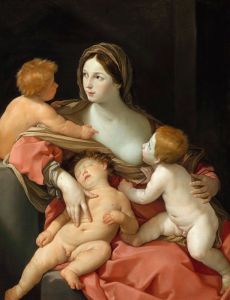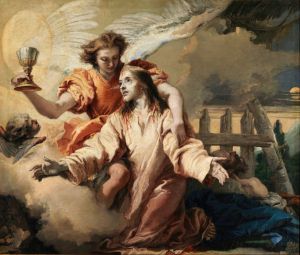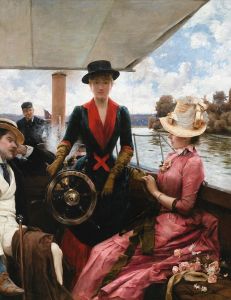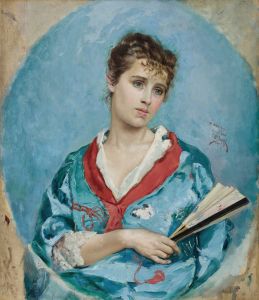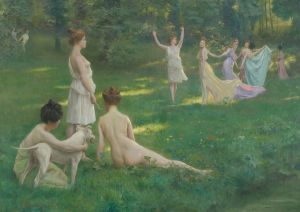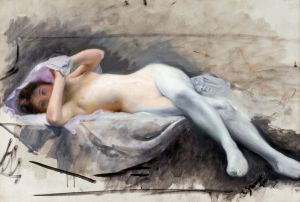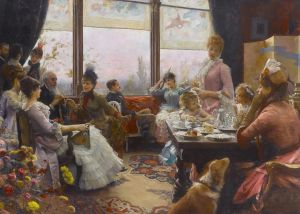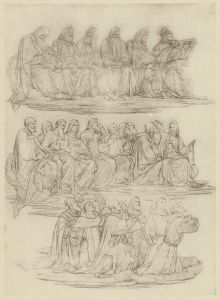
The Baptism
A hand-painted replica of Julius Leblanc Stewart’s masterpiece The Baptism, meticulously crafted by professional artists to capture the true essence of the original. Each piece is created with museum-quality canvas and rare mineral pigments, carefully painted by experienced artists with delicate brushstrokes and rich, layered colors to perfectly recreate the texture of the original artwork. Unlike machine-printed reproductions, this hand-painted version brings the painting to life, infused with the artist’s emotions and skill in every stroke. Whether for personal collection or home decoration, it instantly elevates the artistic atmosphere of any space.
Julius LeBlanc Stewart was an American artist known for his luxurious and detailed paintings, often depicting the social elite of his time. Born in Philadelphia in 1855, Stewart spent much of his life in Paris, where he became an integral part of the expatriate art community. He was a student of Jean-Léon Gérôme and became known for his ability to capture the opulence and elegance of the Belle Époque era.
One of Stewart's notable works is "The Baptism," a painting that exemplifies his skill in portraying intimate social gatherings with a keen eye for detail and atmosphere. While specific details about "The Baptism" are limited, Stewart's oeuvre often focused on themes of society, leisure, and the private lives of the wealthy. His works are characterized by their rich color palettes, intricate compositions, and the ability to convey the textures and materials of the luxurious settings he depicted.
"The Baptism" likely follows these themes, capturing a moment of personal and social significance. Baptisms, as a subject, offer a glimpse into the ceremonial aspects of life, often involving family gatherings and religious rites. Stewart's attention to detail and his ability to render the subtleties of human interaction would have been well-suited to such a subject, allowing viewers to engage with the scene on both an emotional and aesthetic level.
Stewart's paintings are often compared to those of his contemporaries, such as John Singer Sargent, due to their similar focus on the high society of the time. However, Stewart's works are distinct in their narrative quality and the way they invite viewers into the private worlds of his subjects. His ability to capture the nuances of light and shadow, as well as the textures of fabrics and furnishings, adds a layer of realism and depth to his compositions.
Throughout his career, Stewart exhibited his works at the Paris Salon, where he received critical acclaim. His paintings were well-received for their technical proficiency and the way they encapsulated the spirit of the era. Stewart's legacy is that of an artist who not only documented the lifestyles of the affluent but also provided insight into the cultural and social dynamics of his time.
While "The Baptism" itself may not be as widely discussed or reproduced as some of Stewart's other works, it remains a testament to his skill and artistic vision. Stewart's ability to capture the essence of a moment, combined with his meticulous attention to detail, ensures that his paintings continue to be appreciated by art historians and enthusiasts alike. His works are housed in various collections and continue to be studied for their contribution to the understanding of late 19th-century art and society.






